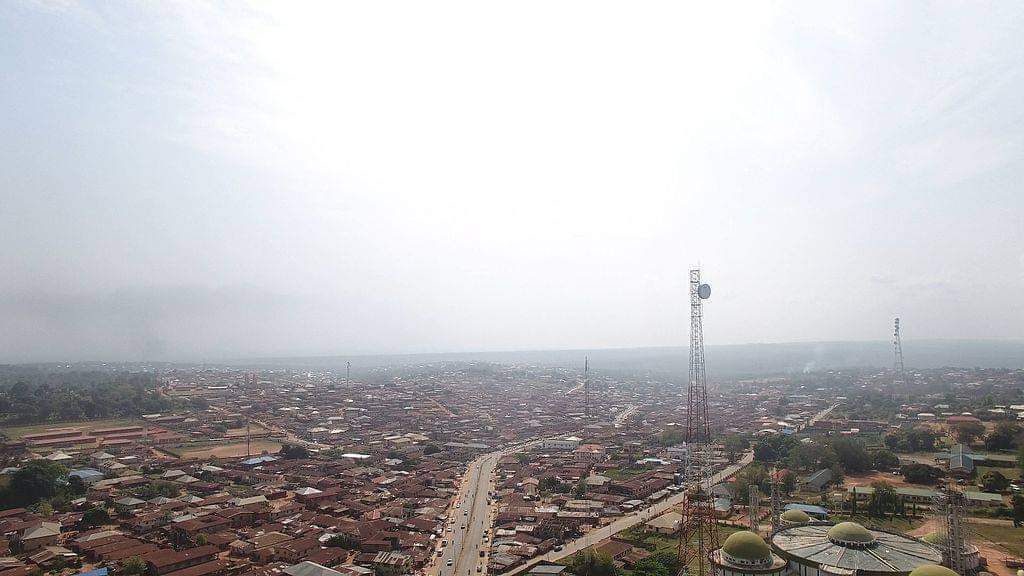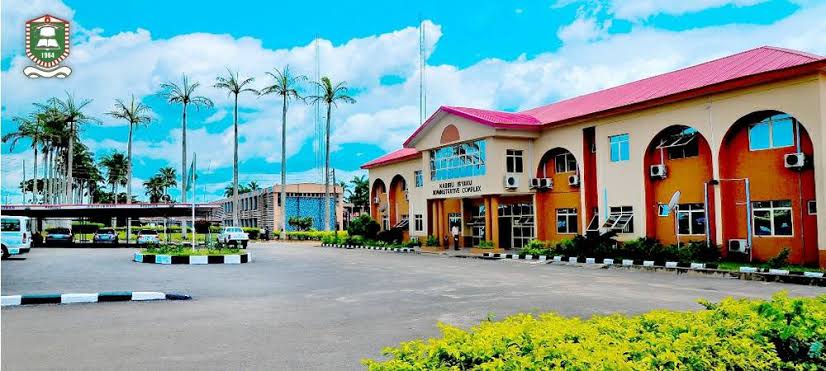Owing to the argument about the origin of the people of Auchi, this article gives a clear explanation about the origin and subsequent islamisation of the town. Auchi exist long before the arrival of the Nupes. The inordinate ambition of many people to become rich by trafficking human beings had inspired the Nupes and the Hausas to go abroad for new advantages. However is noted till date that they (the Nupes) played a major role in the islamisation of Auchi town which still exist till date.
Auchi was founded by a man called Uchi who migrated from Udo near Benin City about 14th century C.E. definitely before the reign of Oba Ewuare of Benin. The coming of Uchi, his family and followers to this Guinea Savannah belt know today as Etsakoland was as a result of internecine wars, acts of brutality, intimidation and dehumanisation which the proud people of Auchi and their likes could not perpetually stomach. The town is bounded on the east by South Ibie;. On the north-east by Jattu; on the north by Ayua, iyuku and Imeke; on the north-west by Ikpeshi and Ihievbe Ogben; on the south by Ivbiaro and Warrake and on the south by Era and Ayuele-Ugioli.
The location of Auchi is hilly with pockets of valleys and flat plains. The settlement was a splendid choice. The town is close to about twenty rivers, rivulets and springs such as Orle, Omemhe, Ofhotsele, Eda Ibariki, Ukpheleghi, Eda Nokhua (Utsogu), Eda Nokhua (Aibotse), Amasomhe, Umhouku, Ayeda, Ayeda-Aminu, Eda Udo, Eda Oke, Eda Ayomhe, Oki, Arhebekpeghie, Edo Ofoli, Ikpaigba. and Eda-Egini
Right from ancient times, migrants have always preferred to settle where they are sure of abundant water, flora and fauna. The case of Auchi could not have been an exception. It is due primarily to the indispensability of water to life that many groups in Africa and elsewhere took to a deification of the prominent river in their localities .That Auchi people of old used to worship Orle is, therefore, not a surprise, though it was wrong. It is the Creator of Orle, the Creator of other rivers and the universe at large who should be worshipped with undivided attention and utmost zeal, that is Almighty God.
In the accounts of migration from Benin and its environs to Etsakoland, many historians explained how people settled in Auchi while many others moved northwards and eastwards. The lush and verdant vegetation of Auchi, its forest and Savannah belts, and very fertile, land had contributed immensely to this reality.
The written history of Etsako people is not very old. Most of the sources of Etsako history were first documented by European explorers, missionaries and colonial officers. In the case of Auchi, the oldest record available is the mention of Auchi and a few other Etsako towns and villages by Kweller, a European writer in a work he published in 1850. In the work, the author interviewed freed slaves in Freetown and asked them to mention their places of origin. That was in the 1820s. A particular ex-slave named Agbodo or George Cole of Campbell town claimed that he was of lslam origin from Iwieta (Ewatto) whence he was sold into slavery at the age of 18 and taken to Sierra Kaeone in 1827- He was asked to mention the towns and villages in his area of origin and that was how he mention AWITSI (Auchi) among a few others. The conclusion however is that, at least by 1820, i.e. before the coming of the Nupe, Auchi was firmly in existence. This is contrally to the believed that Auchi people migrated from Housa Land.
Auchi town is made up of five grand quarters which were initially inter-dependent villages with common ancestry. Patches of bushes separated the villages and intermixed with the houses even within the same Quarters. The grand’ Quarters are Utsogu, Akpekpe, Aibotse. Igbhei. and lyekhei. Utsogu is the royal Quarter from which the Otaru (king) of Auchi is customarily chosen and enthroned right from the era of Ikelebe I in the middle of the nineteenth century. Utsogu has the responsibility of welding Auchi together and galvanizing the town in its valorous forward march for the attainment of lofty goals. Within each of the grand Quarters, there are small Quarters and kindreds with clearly demarcated lineages both from within matrilineal Amohoya and the matrilineal Otse” types of wedlock of the pre-Momoh era of Auchi.
Even when the Nupe over-ran the area along with Kabba, Ebira and other Afenmai territories, the worship of idols was not discarded. The Nupe warriors were primarily interested in collecting tributes from their subjects. Such tributes included slaves and foodstuff. They were not interested in Islamic propagation in the area as that would have defeated their goal of economic exploitation. Nonetheless, their presence in large numbers in Auchi, Ayuele and other towns sparked off an Islamic revolution with the passage of time. It is interesting to note that towards the end of the 19th century and the beginning of the 20th century, when the British dislodged the Nupe from Afenmai, which was the time interest in Islam on the part of the benevolent despots in the area, took roots. This was the case at Agbede, Auchi, Okpella, South Ibie and Uzairue for instance.
ISLAM IN AUCHI BEFORE THE ERA OF MOMOH
This sub-heading may surprise some people in Auchi as the name of Momoh is almost synonymous with the advent of Islam in Auchi. The fact is that Islam was practised in Auchi before the birth of Momoh, though it was practised then by strangers who were mainly of Nupe, Hausa, fulani, and Yoruba origins. A few indigenes of Auchi particularly at Aibotse and Igbei also embraced Islam. It should be noted that
The Nupe and Hausa settlers lived mainly at Aibotse. This perhaps is the reason why the praying ground lies in Aibotse till this day. It has never been shifted from that area since the inception of Islam in Auchi.
In spite of the fact that the Nupe did not directly Islamize Auchi, the fact remains that interest in Islam and the islamic revolution which took place in the area subsequently were the result of their Conquest and sociopolitical interaction with the people of Etsako. Nupe mallams also contributed greatly to the islamization process when the people of Ayuele, Auchi, Uzairue, South Ibie and others decided to adopt Islam as a state religion. In view of the above mentioned reality, the role of the Nupe in the islamization of Auchi cannot be brushed aside.
THE ROLE OF MOMOH OSIOGBHELE IDAEO IN ISLAMIZING AUCHI AND ITS ENVIRONS
The phenomenon called Momoh has been a subject of great interest among Islamologists and historians in Nigeria. The young Prince Osiogbhele Idaeo was born in the second half of the 19th century to Otaru ; ldaeo, son of Ikelebe I. As a child, Osiogbele exhibited extraordinary inteligence, sound moral and magnetic friendliness. He was often found in the company of Nupe and Hausa mallams whose islamic practices he cherished. He embraced Islam at a time when very few Auchi indigenes were Muslim. He adopted the Islamic name Muhammad, which is locally pronounced as Momoh, Momodu, or Modu. It happened to be the name of his Hausa Mallam who taught him how to read the Qur’an in Arabic. Momoh, as he came to be known, also employed the services of a private teacher to teach him English. The intelligence report of the colonialists confirmed the fact that he could communicate in English.
According to Chief Abudah Idaeo, the younger brother of Momoh and chief chronicler of the ikelebe Ruling Family, Momoh had his first child by I903. This suggests that by 1900 he was already in his early twenties at least.
By 1914 when Momoh declared an Islamic revolution as the unchallenged heir-apparent of Auchi, he was already about thirty-five years old, and a visionary mallam who had great plans for Auchi. It is true that Momoh ascended the throne as the Otaru of Auchi in 1919, but the fact remains that he sought permission from the then Otaru of Auchi, H.R.H. Ikharo, son of Ikelebe I, and declared Islam the state religion of Auchi, an act which was to have tremendous consequences for Auchi as a town and an institution. It signified a resolve to part ways with the many unpleasant aspects of Edo culture and a resolution to turn towards the north and merge with the Nupe and Hausa in faith as well as aspects of culture and politics.
Because of the islamization process carried out from 1914 to 1944 by Momoh in Auchi, some Nigerians have been misled to think that Auchi people are of Hausa origin. This is not true. Auchi and many other Etsako communities adopted the Islamic faith and Hausa culture to a large extent as a matter of choice. The ancestry, behavior and language proximity between the people of Auchi and the neighbouring towns confirmed this.
Momoh did not only declare that Islam should be the official religion of Auchi, he also championed the destruction of material representations of polytheistic worships at Auchi. Thus he destroyed the idols which represented Uchi, Orle, Ogholodio, Amanue, Igbenede etc. In doing so, he employed the services of fearless Islamic scholars of Nupe. Hausa, Yoruba and Auchi origins who recited certain Qur’anic verses. Prominent among the Auchi iconoclasts were Mallam Aliu Idaeo and Chief Kadiri Idaeo (Momoh’s younger brothers), Chief Abu Maikaikarfi Ogboilitsa” of Afachilekpe, Chief Abutudu Ainakhu of lyogaga, and Chief Musa :ltsene of Akpekpe”.
Momoh welcomed mallams from far and near, honored them profoundly and sought that they pray for his family and for Auchi. During his reign, mallams who visited Auchi were so , honored that some of them did not want to go back to their home towns. He attracted some of the mallams who were moving from one Etsako town to another to stay permanently at Auchi to teach people the tenets of Islam. One of such mallams was Shaykh Bawa Muhammad who later became the chief imam of Auchi (died-1973). He gave the Shaykh his sister Madam Asimau Igienekphe and asked the Shaykh to stay permanently in Auchi as an indigene. Most of first generation mallams in the town and its environs were direct students of Mallam Bawa.
As a visionary who knew the value of spiritual education, Momoh gave many of his daughters to a number of mallams in marriage. That act further consolidated the relationship between him and the first and second generations of mallams in Auchi. To him the spiritual position with which Allah endowed these pious mallams was loftier than that of royal birth. Consequently, he had more princes of other towns.
As a serious Islamic propagator Momoh sent a number of mallams to neighboring communities to preach Islam and teach them how to read the Qur’an. Notable -among such communities are Uzairue, South Ibie, Avianwu, Ikpeshi, Agbede, Avhiele and Egbigele. The mallams sent were of Auchi, Hausa, and Nupe origins.
Conclusively, i will like to state here that by 1820, i.e before the coming of the Nupes, Auchi was firmly in existence. The people of Auchi only support and practice the Islamic religion, but not as mostly speculated that Auchi migrated from Bauchi or any of the northern state.
Source: Esan Blog














